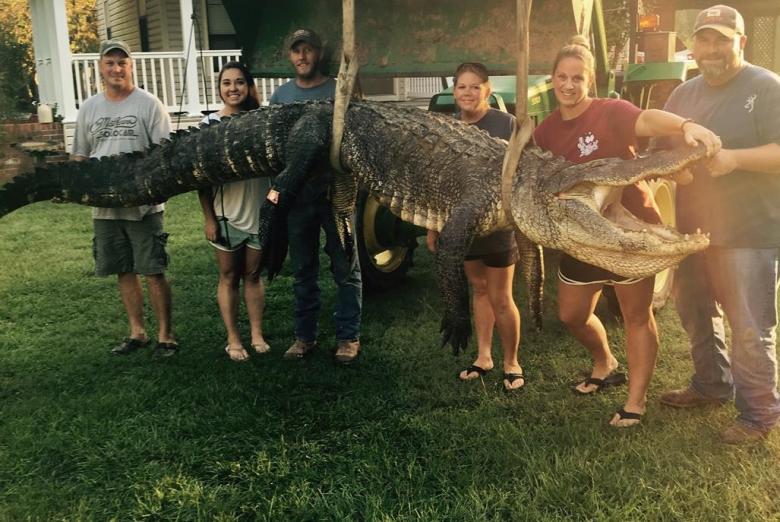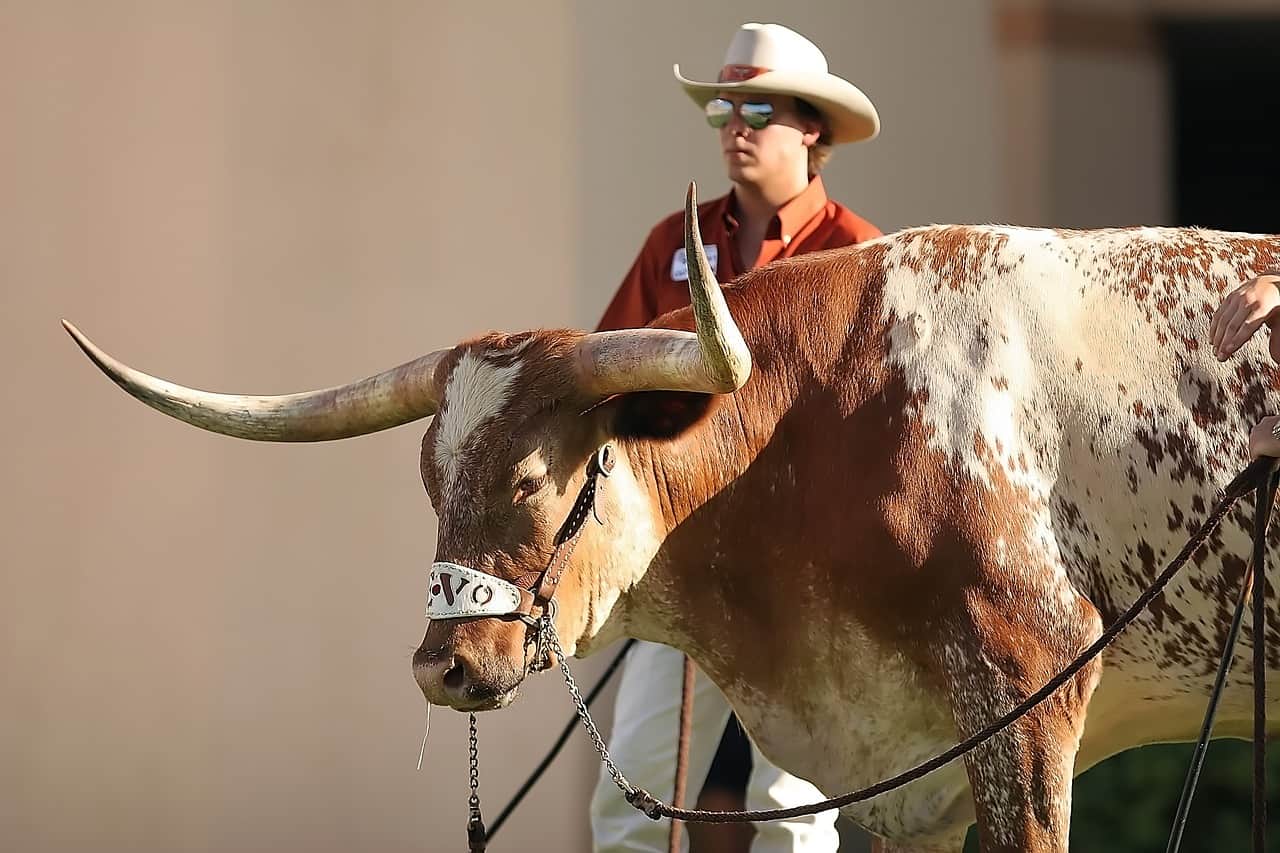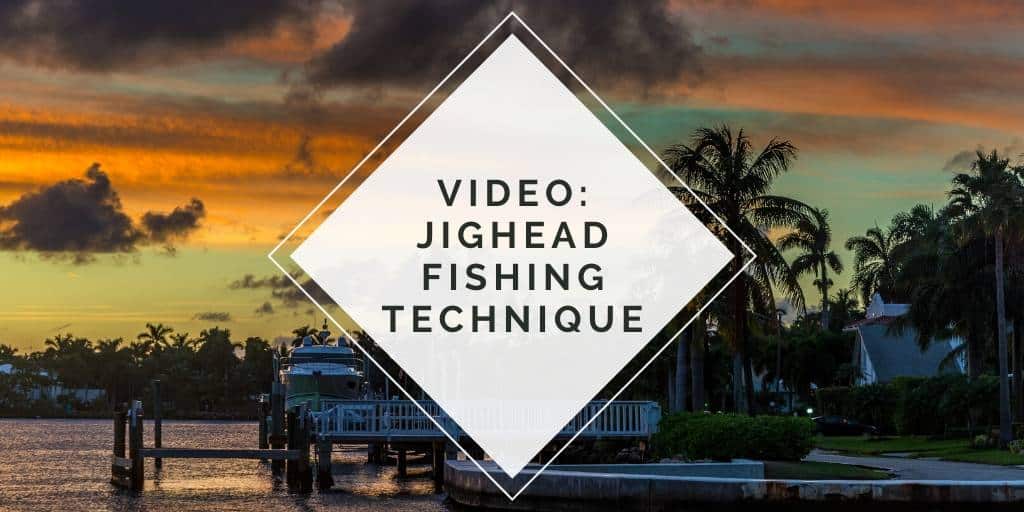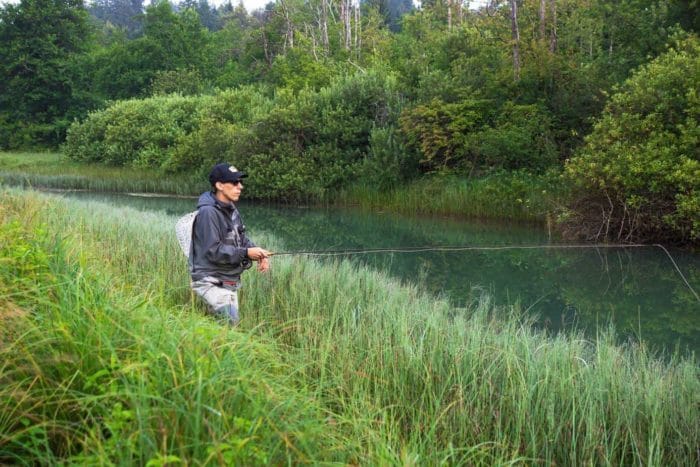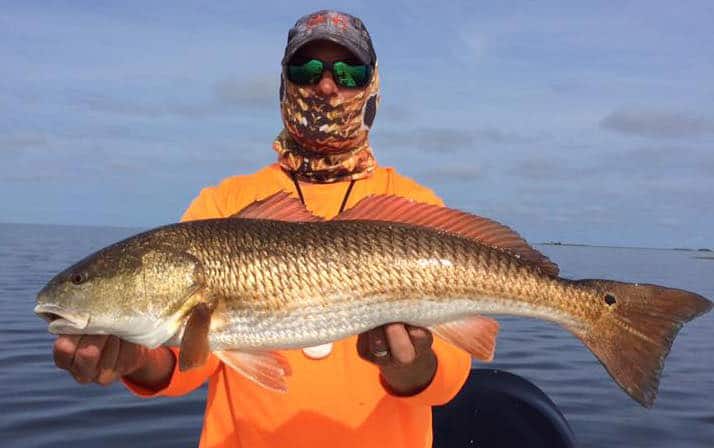
We’re excited to have Captain John on our Outdoors360 team, and write our upcoming forecasts for the Big Bend of Florida. Captain John Delgado is the owner and Professional Fishing Guide at Tidal Reaction Charters.
With the beginning of a new school year starting summer is almost wrapping up, and with that change of the season will trigger many days of excitement in the months to come. First, we get college football back on Saturdays, then FL’s archery season kicks off, and of course who could forget the Thanksgiving dinners with family and friends to come. Of course each year as the weather begins to change from the sweltering heat of the summer to the first cool mornings of October and November, my excitement level starts hitting it’s redline. Not because the heat is gone or because the leaves will start to change colors. No, it’s because with each passing day of cooler temps the inshore waters of the Big Bend with begin to fill up herds of schooling redfish.
What are Redfish and why would one species of fish invigorate so much passion in me? Well….let me give you just a few of the reasons. Redfish aka Red Drum are one of the most sought after species in the Gulf of Mexico all the way up to the Carolinas. Their name gives apt description, as they are often colored in a reddish tint, although they can appear to be silvery, copper and even a deep golden hue depending on the waters their frequenting. Through much of the year the water clarity of our coast is clear to “gin” clear and therefore the majority of the “reds” we catch are in the typical reddish tone. Another great trait of redfish is their ability to fight; these bad boys won’t come to the boat easily and often win the battle against light tackle. Although the strength of redfish has always been one of my favorite reasons to spend countless days in pursuit, my favorite reason of all would have to be the variety in which they can be caught. Unlike some species of fish that only present a single angling opportunity to catch them. Redfish can be found in several different areas of the coast and will take a large variety of lures and baits.
Let’s focus on a couple of the most common areas we catch redfish along the Big Bend coastline. Oyster Bars or “bars” as many anglers call them, can be a redfish’s paradise. “Bars” create a unique structure that are suited very well to a redfish’s feeding habits. If you’ve ever held a redfish before, you know that their scales are like a suit of amour. Those tough scales allow redfish to work in areas with sharp edges without hurting themselves and they can often be seen swimming right against or even on top of the “bar”. These oyster bars give a redfish a mini ecosystem to patrol and a break in the current to use as an ambush point for passing baits. I prefer to work a group or cluster of “bars” as there will be multiple points or cuts to present a lure through. A redfish will often cruise around the edges of the “bar” or face straight into the current in these cuts between the “bars” and let the tide bring dinner to them. Another feature of oyster bars that redfish love are the infinite amount of tiny spaces that crabs, small bait fish and other crustaceans have to hide in. The tight spaces between the oyster shells provide cover, but they also give the redfish a buffet of some of their favorite treats.
Unlike some of the other members of the “drum” family, the redfish have a downturned mouth. Which makes feeding along the bottom very easy for them and perfect for slurping a small crab, shrimp or bait right out of their hiding space along the “bars” Just a few quick tips about fishing bars, if you’re not getting hung up on the bar itself occasionally, your most likely not presenting your lure in the zone that redfish are patrolling. I tend to work the “bars” as they are just about to get covered by the tide or just as they are getting uncovered by it. At these times the current is pulling the most bait into or around the “bar” and the feeding should be well under way. A word of caution when fishing oyster bars, the shells of an oyster are extremely sharp. They can and will cut your line and snag your favorite lure in an instant. If your lure become hung in the “bar” ease up as close to it as possible and lightly pull with tip of your rod to free it, or try to get behind the snag and pull it off in the opposite direction as you threw it. It’s always best to lose a lure rather than to slam into a hot “bar” with your boat or trolling motor and shut down the bite. Also, be extra careful that you do not fall onto the bar when freeing a snagged lure, even with heavy clothing you can be seriously injured.
Another popular and productive area for redfish are the shallow grass flats our coastline is famous for. We literally have miles upon miles or pristine grass flats with a mix or limestone, sand and even a few rock (ok, maybe more than a few rocks). As I mentioned before, redfish have a knack for feeding along the bottom. As they roam along a shallow grass flat or shoreline, their constantly looking for a meal to pick up. It could be a pinfish hiding in the blades of turtle grass or a shrimp digging into the soft sand. When redfish are actively feeding in the shallow the most recognizable way is to see them “tailing”. Tailing happens when redfish or sticking their noses directly into the bottom while trying to sniff out a meal that has hunkered down into the bottom. When redfish are feeding in this manner, most often in extremely shallow water (typically 8-12″ deep) their tailfin will stick up above the waterline and give away their position.
I most often attribute the pursuit of tailing redfish to stalking a deer, you have to be very careful to not disturb them or they will slip back under the surface and disappear in a flash. Redfish are spooky at best, but in shallow clear water their as nervous as a cat in a room full of rocking chairs. One mistake and you can blow every fish within a 100 yards out. So be quite, be stealthy and be patient. If you’ve done everything right and have gotten yourself into casting range of a “tailer” (50-80′), make sure you throw your lure or bait past the redfish. Landing a bait directly on top of a feeding fish will result in absolute frustration. Just think, when was the last time a double cheese burger fell out of the sky and landed in your lap. That’s not natural and will be the last cast you make to that fish. I like to land my lure about 8-10″ ahead of the redfish and slowly drag it back to within a foot or so of them. This way it should come into their sight or within smelling distance and I’ll let the fish find it for themselves.
This is what makes sight casting truly thrilling, you’re looking at the fish you want to catch, you have to make a great cast and you watch them eat your bait. Doesn’t get any better than that for me. Fishing for “tailing” redfish is only done by the shallowest of boats or paddle craft, so don’t bother putting on your game plan if your boat drafts more than 12-13″ of water. Not to worry if you don’t have a super shallow boat, redfish stay on the grass flats from the top of the tide all the way to the bottom. So time your day right and work the incoming tide in a comfortable depth for your vessel. I find that redfish will hang out most often in depths of 16-24″. So even your mid sized (20-23′) center console can drift along the grass flats and target redfish. Just remember, that even in deeper water redfish are still very wary of noise. So keep your voices down, don’t slam lids to the livewell or storage compartments. Even walking to fast and hard can send enough sound through the water to turn them off.
The great thing about redfish on the flats is they tend to travel in schools. Schools of redfish can be a small as a few fish (5-10) or as large as a semi trailer. I’ve seen as many as 500 redfish moving together across a flat. I like to scan the surface on calm days and look for tell tell sign of schooling redfish. You can see often see them from as far away as 100-300 yards away. If your boat is equipped with a trolling motor your in luck and if you also have a Power Pole shallow water anchor as well, your as good as gold. You want to move your vessel slowly into positon as to let the school pass within casting distance without getting close enough to “feel” your presents. If you can do this, you can move along the flat parallel to a school for as much as an hour or more. Which could give you the chance to catch 10-20-30 even 50 fish from the same school!
Here’s a some of the lures most commonly used to catch redfish: Gold Spoons, a small metal lure with a single hook. Very effective when worked slow and steady just above the bottom. Whether your fishing over grass or around oyster bars, redfish love to eat gold spoons. They come in several sizes and even colors. I prefer the lightest spoon I can throw a minimum distance of 75-100′. Topwater lures, even though a redfish’s mouth faces the bottom. A redfish will absolutely jump all over a lure floating at the surface. I tend to use a small to mid sized topwater (3′-4 1/2″) which makes swallowing at least part of the plug easier of them. There are 100’s of colors and style, but a few have stood the test of time. Red/white, silver/black, chartreuses and pear white have always produced for me. Soft Plastics, there’s almost any many different types, sizes and color of soft plastics as there are fish in the sea Depending on water depth and bottom type your around, you can rig a soft plastic several ways.
Around “bars” I prefer to go with a size 3-4 “bass” hook and rig my bait snag les(helps to keep it from hanging up. Over grass and limestone mixed bottom, I’ll use a weighted version of a “bass” hook to allow me to work the bait in a slightly faster manner than around the “bars”. When working a soft plastic on the flats where there are good sized sand holes, I’ll use jig head hook, which will allow the bait to sink to the bottom faster and give you plenty of ways to jig, hop or skip your bait over the grass and through the sand. I always try to use the light amount of weight possible to keep it from settling down to fast into the grass. It’s a lot easier to slowly work a light bait over or through the grass, then one that sink down deeper and will hang up much faster.
Some of the most effective have been Berkley Gulp! 3″ shrimp, Zoom Flukes(5″), DOA shrimp and Bass Assassins sea shads. Again there are 1000’s of color combos between these soft plastics and others, but I stick to some of the basics every year. Pearl White, Arkansas Shiner, New Penny, Electric Chicken (yes, I said electric chicken. I don’t make up the names…lol) Baby Bass, etc. Spend some time working a few color patterns each trip until you find a color, size and style that you have confidence in. Redfish can be picky at times, but I find that a well presented lure will get the job done more so than the right color with the wrong action. So focus on your presentation and change up your color or type of bait if your seeing fish, but they won’t eat.
Of course there’s always an option of throwing live bait or even “cut” bait to redfish. I don’t know of a saltwater fish that doesn’t eat shrimp and redfish are no exception. Whether you suspend a shrimp under a bobber or free line one near a “bar”, if there are redfish around you stand a good chance of getting a bite. Live pinfish, mud minnows, finger mullet and pilchards (aka scaled sardines) all work well for redfish. On the toughest days it’s a good option to try live and cut bait at the same time. Sometimes the fish are just not as active and will eat a cut up finger mullet soaking on the bottom versus a frisky half dollar sized pinfish scrambling for his life.
Spoon feed a couple big girls last week. Ladder platform maybe low rent, but it paid some serious dividends…#redfishdistrict #drumspots #redfish #spoonfeed #gloomis #penn #quantum #shearwater #minnkota #aquadream #copperbeauties
Here’s one last piece of info that could make or break your fishing trip or bank account. As discussed, redfish often frequent shallow parts of the coast. If you’re not sure of the water depth or the type of bottom your over, go slow and easy. Nothing will ruin your day faster than a broken lower unit, a cracked hull and a hefty bill for the repairs if you hit hard bottom. I’ve spent in excessive of $3500 for replacement of a lower unit and fiberglass work learning the hard way. Take it from a bottom hitting expert, you have plenty of time, you’ll learn more idling in about the lay of the land and will be glad you saw those rocks, bars or hard bottom area, instead of slamming into them.
Lastly, if your approaching a shallow flat or group of oyster bars and you see another vessel that engaged in fishing. Do the right thing, reduce your speed to idle or better yet, use your trolling motor to make the rest of your way. The sound of an outboard motor can be heard from as much as a 1/4 mile away underwater. Don’t spoil someone else fishing trip by being in a hurry to get in there too. As a rule, I make every effort to give at least 250-300 yards of space to another vessel engaged in fishing. I also use my trolling motor or drift into an area from 150-250 yards away. This has always helped to increase the chances of me not spooking the fish I’m after or the fish someone else may be already catching. Courtesy goes a long way on the water, the guy you show respect to, might just be the same one that helps you out with a new tip or spot to help improve your next time out.

This report is brought to you by First Federal Bank of Florida. Stop by one of our many branches in North Central Florida, or call us at 386-755-0600.


